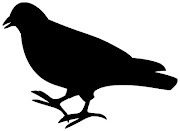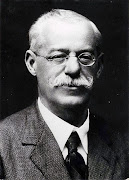by Ramiro Aznar Ballarín
In order to understand how a town works, it is essential to know its spatial, social and historical context. While the current post describes its landscape [1, 2], the following ones will be focused on its history and urban evolution.
The village of Zuera is situated within the municipal area of its same name. This is located within the province of Zaragoza, concretely 26 northeast from the capital of Aragon, Zaragoza. Further, the municipal area of Zuera has a total surface of 33,317 ha, and it is geographically placed between the Ebro basin, and the Exterior Sierras of the pre-Pyrenees. The Gállego river runs through the region and its average altitude is approximately 300 m, although in the highest part of the "monte" there are hills which can reach 700 m as the 726 m of La Lomaza, the highest hill of the area.
The landscape of the municipal area is very diverse. In fact, we can find a mixture of flat and hilly ("alomados") surfaces. The flat territories, on the one hand, are shaped by the Gállego river dynamics, that is the Quaternary alluvial terraces. Dwelling on these horizontal surfaces the different urban areas (Zuera, El Portazgo, barrio de la Estación, Las Galias, Ontinar de Salz, and Las Lomas del Gállego) as well as the industrial parks (El Campillo and Los Llanos de la Estación). Moreover on the terraces and the alluvial landscape it is possible to find orchards and irrigated agriculture crops.
The turquoise water of the Gállego river // Las aguas turquesas del Gállego [photo by José Aznar Grasa]
On the other, the hilly landscape is composed by the Tertiary structural platforms, made by geological materials like marl and gypsum, the latter is considered as one of the most conspicuous elements of the landscape of Zuera. These soft rocks make a fragile and brittle landscape, and as a result, the hillslopes have plenty of long incisions and small ravines. Because of these particular geological features, there are several small basins with flat bottom where rainfed crops can develop.
Agricultural semi-steppe landscape characterized by gypsum rocks, mediterranean shrubs and rainfed crops // Paisaje estepario caracterizado por los yesos, matorral mediterráneo y cultivos de secano [photo by José Aznar Grasa]
Finally, in the northwest part of the municipal area, in which the landscape is more abrupt and hilly, there can be seen the limestone surfaces at the top of the so-called "muelas" or "mesas" (small plateaus) that are typical of the landscape of "monte alto" and its pinewoods.
Finally, in the northwest part of the municipal area, in which the landscape is more abrupt and hilly, there can be seen the limestone surfaces at the top of the so-called "muelas" or "mesas" (small plateaus) that are typical of the landscape of "monte alto" and its pinewoods.
The common components of one scene at the "monte alto": pines (Pinus halepensis), crops and gypsum wall // Componentes típicos que se pueden encontrar en el monte alto: bosques de pino "halepo" o "carrasco" (Pinus halapensis), cultivos y muro de piedra de yeso [photo by Ramiro Aznar Ballarín]
por Ramiro Aznar Ballarín
Para poder entender la dinámica de un pueblo es esencial conocer su contexto espacial, social e histórico. De esta forma, en esta entrada se describirá el paisaje de la comarca [1, 2], mientras que en los siguientes se tratará su evolución histórica y urbanística.
El pueblo de Zuera se encuentra dentro del término municipal del mismo nombre. Éste se encuentra situado en la provincia de Zaragoza, concretamente a 26 Km al noreste de la capital aragonesa, Zaragoza. El término municipal de Zuera cuenta con una superficie de 33.317 ha, se encuentra geográficamente ubicado entre la depresión del Ebro, y las Sierras Exteriores prepirenaicas, está recorrido por el Gállego y su altitud media ronda los 300 m, aunque en las zonas más altas del monte se alcanzan los 700 m (con máximo en los 726 m de La Lomaza).
La topografía que configura el término municipal es diversa, encontrando una combinación y transición entre espacios llanos y espacios alomados. Las zonas con relieve llano corresponden a la morfología propia de la dinámica del río Gállego, se trata de terrazas fluviales cuaternarias. Aprovechando las superficies planas de estas terrazas, se ubican las diferentes cascos urbanos de los núcleos que componen el municipio (Zuera, El Portazgo, barrio de la Estación, Las Galias, Ontinar de Salz, y Las Lomas del Gállego) así como los dos polígonos industriales con los que cuenta (El Campillo y Los Llanos de la Estación). Sobre las terrazas y el entorno aluvial del río también podemos encontrar amplios espacios dedicados a huerta y al cultivo de regadío.
Los terrenos de relieve alomado son los correspondientes a las plataformas estructurales terciarias, conformadas por materiales geológicos como las margas y los yesos, siendo el último uno de los elementos más característicos del paisaje zufariense. Estas rocas conforman un sustrato frágil, por lo cual podemos observar fuertes incisiones y múltiples barranquillos en las laderas. Debido a estas carácterísticas geológicas, aparece la disposición de abundantes barrancos de fondo plano entre las lomas, los cuales suelen estar ocupados por cultivos de secano.
En los terrenos situados en la zona noroeste del municipio, coincidentes con la topografía más abrupta, destacan, las superficies calcáreas que coronan las "muelas" o las "mesas", y que caracterizan el paisaje del monte alto dentro del pinar.
[1] Página web del Ayuntamiento de Zuera: www.ayunzuera.com
[2] Gracia Aísa, C. 2005. La flora de Zuera y sus pinares. Ediciones Prames. 223 p.

.jpg)















0 comments :: between the hill, the stone and the river // entre el monte, la piedra y el río
Post a Comment